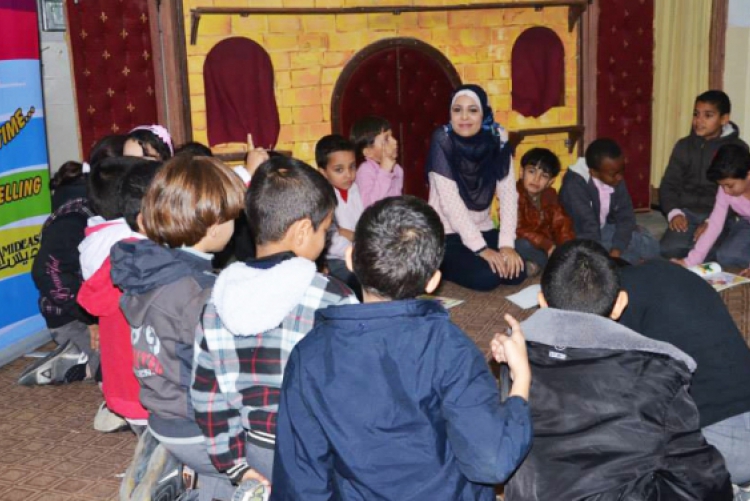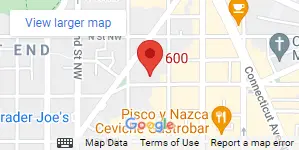Education is just one of many crises in Gaza, but it is one of the most important. Seven weeks of fighting left more than 100,000 Gazans homeless, 22 schools completely destroyed, and 118 damaged, adding strains to school facilities that were already operating in double shifts. With half of Gaza’s 1.8 million population under the age of 18, and most refugees dependent on schools operated by the UNRWA, the devastation had a far-reaching impact on access to education.
The mobile library will visit 80 UNRWA and private schools and community centers that serve children and youth. By focusing on drama, art and songs, the storytelling campaign will help 2,000 children in grades 2 through 5 deal with the aftermath of the fighting. “It’s not the same as ‘psychosocial’ counseling, which is widely needed among Gaza’s young population, but will have that effect,” says Steven Keller, Amideast’s country director for the West Bank and Gaza.
Keller and his staff should know. They have been working with UNRWA and the U.S. Consulate General in Jerusalem for the past eight summers to provide a popular summer camp for children from Gaza’s largely refugee population. That gave them a curriculum to offer. Moreover, they had already been working with these children and resumed doing so as soon as the fighting stopped.
“When we reopened the day after the ceasefire took hold, our staff of 35 English teachers made an effort to check on each student in our English language programs,” recalls Anees Abu Hashem, manager of Amideast’s operations in Gaza. Those students included 600 registered for a summer session that was to have begun around the onset of the fighting, as well as 800 teenagers in the English Access Microscholarship Program, an initiative targeting underserved youth that Amideast implements on behalf of the U.S. Department of State.
“It was important to allow students to talk about the experiences that they, their families, and friends had during the war. Our teachers deserved much credit for making this a priority despite the fact that many of them were also suffering their own traumas.”
Amideast has maintained a continuous presence in Gaza since 1984. Although the office remained closed throughout the fighting, staff worked tirelessly from home in order to assist scholarship students who were scheduled to leave for studies in the United States. Thanks to their resolve and determination and the energetic support of the U.S. Consulate in Jerusalem, the appropriate referrals were made to the U.S. Embassy in Jordan and elsewhere, enabling 20 out of 21 students to receive their exit permits to leave.
Amideast staff spent additional hours throughout the crisis contacting current scholarship students and alumni, a task that took on urgency as they learned of tragic injuries, deaths, and loss of homes among this large community. A high priority once the office reopened has been to identify the most severe cases in order to assist them.
Getting the office’s operations back on track has also been a priority. Interest among Gazans in education is extremely high. Many seek guidance about U.S. study, making it important to reopen the EducationUSA advising center that Amideast manages on behalf of the U.S. Department of State. English language classes have been especially popular in Gaza for years—over 25,000 have enrolled since 2010 — and it was therefore important to enable summer students to complete their courses before the start of the fall school term.
“We wondered what impact the war would have on demand for English language courses and anticipated that it would drop, but we actually have more students this summer and fall than a year ago, despite the tougher circumstances,” notes Abu Hashem.


